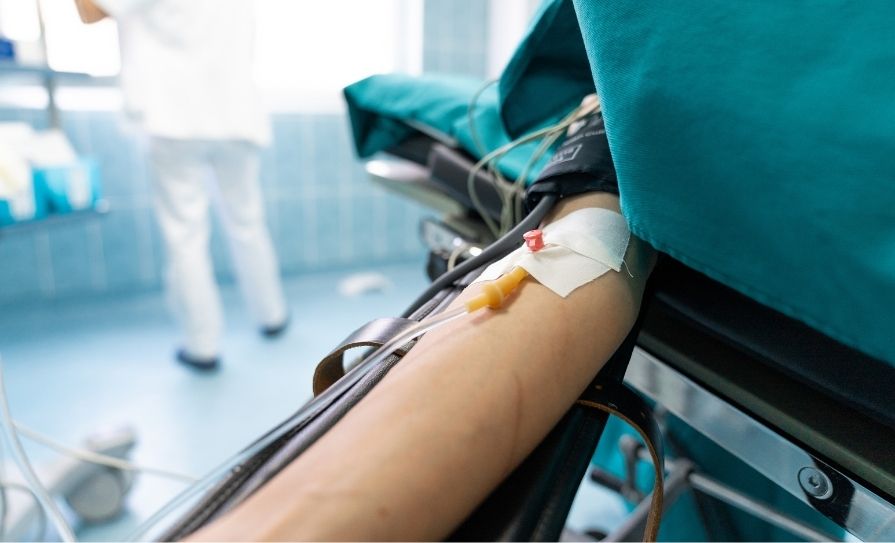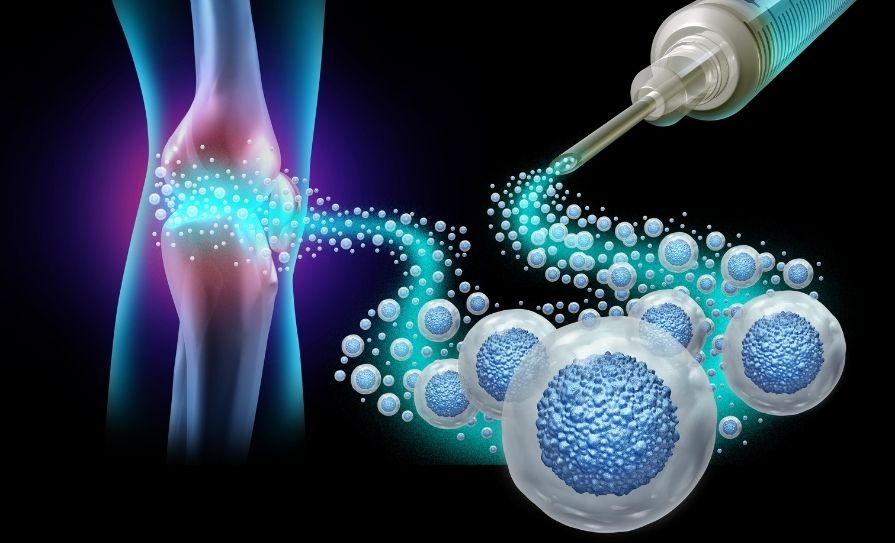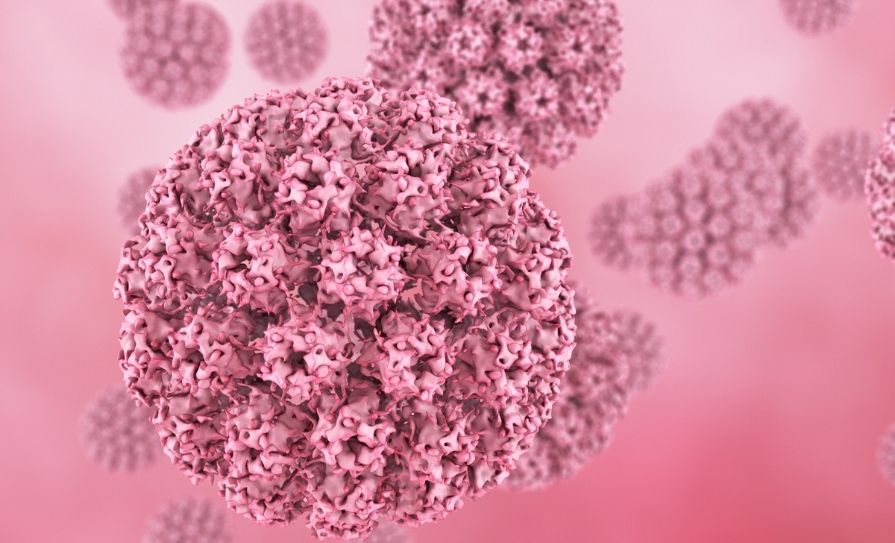This article outlines the lastest diagnosis and treatment approaches to bladder cancer, including the most recent European guidelines and HSE protocols
Bladder cancer accounts for 3 per cent of cancer cases worldwide annually, with incidence rates increasing year-on-year.1 Bladder cancer affects about 490 people in Ireland each year.
About 90 per cent of cases arise from the urothelial cells (also known as transitional cells) that line the bladder and urinary tract and are termed transitional cell carcinomas (TCCs). Squamous cell carcinoma (SCC) accounts for the majority of the remaining cases and is most commonly associated with schistosomiasis infection. Other rarer primary tumours such as adenocarcinoma, melanoma, sarcoma, and phaeochromocytoma can also occur.
Risk factors
It has been shown that approximately 80 per cent of bladder cancer cases can be attributed to known preventable causes.2
The main risk factor is cigarette smoking, conferring a threefold increased risk and accounting for 50-to-65 per cent of new cases per year.1
Occupational exposure is another significant preventable risk factor. Exposure to aromatic amines, aromatic hydrocarbons, and polycyclic aromatic hydrocarbon, which are found in the production of dyes, paint, metal or petroleum, increase the risk of TCC.
Obesity has been shown to increase the risk of bladder cancer by 10 per cent.2
Bladder cancer is 2.5 times more likely to be diagnosed in men, which is thought in part to be due to the historical disparities in smoking rates and exposure to occupational carcinogens.1
Chronic inflammation of bladder mucosa is the main risk factor for development of SCC.3 This can occur through long-term catheterisation, bladder stones, urinary stasis, or infection with schistosoma haematobium. A 16-to-28-fold increased risk of SCC has been reported in paraplegic patients.3 In regions where schistosomiasis is endemic, bladder SCC is the second most common form of cancer, and affects a younger cohort, with an average age at diagnosis of 40-to-49.2 Several genetic polymorphisms have been associated with bladder cancer; however, it is thought that these only account for roughly 7 per cent of all cases.4
Presentation
The majority of bladder cancer patients present with painless visible haematuria (85 per cent of cases). Up to 20 per cent present with storage voiding symptoms such as urgency or suprapubic pain. About 20 per cent of patients with visible haematuria and 3 per cent of patients with non-visible haematuria will have a urological malignancy.5 Visible haematuria is associated with higher-stage disease than non-visible haematuria. Carcinoma in situ (CIS) presents with irritative voiding symptoms in particular.
Investigation
Typical first-line investigation for a patient presenting with haematuria involves a flexible cystoscopy and upper tract imaging, either US renal or CT urogram. Haematuria clinics have emerged as a ‘one-stop’ method for work-up of these patients. Urine cytology can be sent at the time of flexible cystoscopy, and is sensitive for the detection of high-grade tumours or CIS.
Staging
All patients undergo CT thorax abdomen and pelvis with a urographic phase in to assess for local spread and distant metastases. Staging is by the TNM classification. T-staging takes into account depth of invasion through the bladder wall. Nodal staging assesses degree of nodal spread with regard to the common iliac nodes. M assesses for distant metastases. In addition, the tumour is graded based on how well-differentiated the tissue is.
Management
The bladder wall consists of three layers – the innermost mucosa (itself composed of the urothelium and the underlying lamina propria), the muscularis propria or detrusor muscle, and the outermost serosa and perivesical fat. Key to the management of bladder cancer is the stratification of patients into those with non-muscle invasive bladder cancer (NMIBC) and those with muscle-invasive disease (MIBC). Patients can be stratified after initial transurethral resection of bladder tumour (TURBT) and analysis of the specimen to assess for depth of invasion through the bladder wall. The tumour can be further classified as low-grade or high-grade depending on their degree of differentiation. Low-grade tumours account for 70 per cent of all bladder cancers.6
Non-muscle invasive bladder cancer
About 75 per cent of patients have NMIBC at diagnosis.7 These include tumours up to pT1. Non-invasive papillary tumours confined to the mucosa are classified as Ta and high-grade tumours confined to the mucosa are classified as CIS. In T1 cancer the tumour invades the subepithelial connective tissue, but does not invade detrusor muscle. The goal of TURBT in NMIBC is both to make the correct diagnosis and to remove all visible lesions. Bimanual examination under anaesthesia is performed prior to resection to assess for a palpable mass or fixation of tumour to the pelvic wall. The lesion or lesions are resected, with the aim of including detrusor muscle in the sample both to accurately stage the patient and to ensure complete resection. Absence of detrusor muscle in the sample is associated with higher rate of local recurrence. CIS presents as a red velvety lesion; therefore, biopsies should be taken of areas of concern. Length of stay in hospital post-TURBT is typically one-to-two nights. A urinary catheter is inserted at the end of the procedure, and patients may be placed on irrigation, depending on the degree of resection. Trial without catheter (TWOC) is undertaken prior to discharge.
Intravesical chemotherapy
In patients with low-risk NMIBC, post-operative single intravesical instillation of chemotherapy (either mitomycin C or epirubicin) has been shown to reduce recurrence rates compared with TURBT alone.8 This is through destroying circulating tumour cells and having an ablative effect on residual tumour cells at the resection bed. Intravesical chemotherapy should be administered as soon as possible after TURBT, ideally within the first two hours and not longer than 24 hours post-resection.
BCG
Administration of intravesical BCG (bacillus Calmette-Guérin) has been shown to decrease the risk of recurrence in intermediate and high-risk tumours compared with TURBT alone or TURBT and intravesical chemotherapy.7 BCG is live attenuated mycobacterium bovis. The mechanism of action is poorly understood, but it is thought to mediate an immune response by chemotaxis and cytokine production.
Patients who receive BCG must be at least two weeks post-TURBT. It is instilled via a urinary catheter, which is instantly removed, with the BCG then held in the bladder for up to two hours. Patients must take precautions such as sitting to void, so as to avoid splashing of urine, which contains live bacteria, hand-washing after voiding, and rinsing the toilet with bleach. Patients are encouraged to increase their fluid intake and void regularly.
The initial induction course consists of six weekly treatments. This is followed by a six-week break, before a programme of maintenance treatment is commenced. This involves once-weekly instillations for three weeks at three months, six months, and 12 months post-tumour resection. Three once-weekly courses every six months are recommended thereafter up to three years post-resection.9 This is known as the Lamm regime.
Only 16 per cent of patients complete the three-year course of 27 doses, largely due to adverse effects. Common side-effects include dysuria, frequency, and malaise with a mild fever for up to 24 hours post-instillation. If patients develop a symptomatic UTI, BCG should not be administered until they have recovered. There is a small risk (0.4-2 per cent) of developing BCG sepsis, which may present as persistent fever, arthralgia, headaches, rash, and increased malaise. This requires hospitalisation, blood cultures, resuscitation, and commencement of anti-tuberculous treatment.10
Follow-up
For patients with NMIBC, current European (European Association of Urology, EAU) guidelines recommend regular follow-up with flexible cystoscopy, with the time interval between scopes dictated by the grade of bladder cancer.7 Should recurrence be detected, patients undergo repeat TURBT and staging. Current recommendations for surveillance of upper tracts are that those with high-risk tumours should undergo yearly imaging.7
Muscle-invasive bladder cancer
Radical cystectomy is the treatment of choice for localised MIBC (ie, T2-4a, N0, M0 disease). Other indications for radical cystectomy include BCG-refractory, BCG-relapsing, and BCG-recurrent NMIBC.
Neoadjuvant cisplatin-containing chemotherapy has been shown to improve overall five-year survival rates by 8 per cent compared with cystectomy alone.12
In men, standard radical cystectomy involves the removal of the bladder, prostate, seminal vesicles, distal ureters, and regional lymph nodes. Prostate cancer is incidentally discovered on specimen analysis in 21-to-50 per cent of patients.13
In women, radical cystectomy involves the removal of the bladder, the entire urethra and adjacent vagina, uterus, distal ureters, and regional lymph nodes.
Minimally-invasive approaches to cystectomy such as robot-assisted cystectomy, have emerged in recent years. To date there has been no difference shown between these approaches and traditional open cystectomy with regards to oncologic outcomes or major complications.14 Robot-assisted cystectomy has been shown to decrease length of stay and blood loss.14
Patients who undergo cystectomy require formation of a urinary diversion, with three options available at present. The most used options are either an abdominal diversion such as an ileal conduit or a urethral diversion, which involves a gastrointestinal pouch attached to the urethra as a continent diversion. Less commonly, patients may be offered a rectosigmoid diversion. For those undergoing a urethral diversion, a frozen section of distal urethra in men or bladder neck in women is sent to ensure there is no invasive tumour present before pouch formation.
Mortality for cystectomy has been shown to be between 1-to-3 per cent on retrospective studies.15,16 Complications within three months of surgery are seen in up to 58 per cent of patients.15 Late morbidity is usually associated with the urinary diversion. Lower morbidity and mortality rates have been observed in surgeons and hospitals with higher caseloads.16,17 Five-year recurrence-free survival (RFS) for patients undergoing cystectomy has been shown to be strongly associated with degree of invasion, with RFS for pT1 tumours of 76 per cent at five years, compared to a 36 per cent five-year RFS in those with pT4 disease.18
Bladder-preserving treatment
In patients unfit for radical cystectomy, or those who refuse cystectomy, tri-modality treatment (TMT) as a bladder-preserving approach can be used. It combines TURBT, chemotherapy, and radiotherapy. The aim is to maximally achieve local tumour control in the bladder and adjacent nodes while preserving the bladder and quality-of-life. Retrospective studies comparing TMT with radical cystectomy have shown significantly higher rates of overall survival (OS) with radical cystectomy.19 Patient selection is critical to maximise good outcomes if opting for TMT (eg, patients without CIS, T2 tumours).20
External beam radiotherapy in isolation does not appear to be as effective as radical cystectomy or tri-modality treatment.21 It can be used to great effect to manage haematuria, or as an alternative treatment in patients who are unfit for radical cystectomy or chemotherapy.
Palliative management
Metastatic disease
Patients with metastatic urothelial cancer are split into three categories – those fit for cisplatin-based chemotherapy, those fit for carboplatin-based chemotherapy but unfit for cisplatin-based chemotherapy, and those unfit for any platinum-based chemotherapy. Long-term survival is associated with degree of spread – 20.9 per cent of patients with lymph node-only disease survive five years, compared with 6.8 per cent of patients with visceral metastases.22
International consensus criteria is that those unfit for cisplatin-based chemotherapy must meet at least one of the following criteria: Performance status >1, eGFR <60ml/min, grade >2 audiometric hearing loss, grade >2 peripheral neuropathy, or New York Heart Association (NYHA) class III heart failure.23 Most patients that are unfit for cisplatin-based chemotherapy are fit to receive carboplatin-based chemotherapy. About 10-to-15 per cent of those who receive cisplatin-based chemotherapy are alive at five years, with median survival of 14 months.24
Carboplatin-gemcitabine combination therapy is given to those unfit for cisplatin (EAU guidelines 202311, section:7.7.2.2).
Immunotherapy
In those unfit for carboplatin or cisplatin, immunotherapy with PD-1 checkpoint inhibitors such as nivolumab can be considered, with some early promising trial results showing improved disease-free survival (DFS) rates vs placebo.25
The European Society for Medical Oncology (ESMO) published its latest Clinical Practice Guideline on Bladder Cancer in November 2021,26 which provides key recommendations for diagnosis, staging and management of bladder cancer, and includes recommendations on the usage of immunotherapy, and is available at: www.annalsofoncology.org/article/S0923-7534(21)04827-4/fulltext.
EAU guidelines for MIBC and metastatic bladder cancer
Separately, in 2021, the EAU published treatment guidelines for MIBC and metastatic bladder cancer, which were updated in 2022 and 202311 with considerable new data added as outlined below:
Role of neoadjuvant immunotherapy and chemo-immunotherapy11
Inhibition of PD-1/PD-L1 checkpoint has demonstrated significant benefit in patients with unresectable and metastatic bladder cancer in the second-line setting and in platinum-ineligible PD-L1+ patients as first-line treatment using different agents. Checkpoint inhibitors are increasingly tested also in the neoadjuvant setting; either as monotherapy or in combination with chemotherapy or CTLA-4 checkpoint inhibition. Data from two phase 2 trials have been presented with encouraging results. The results of the phase 2 trial using the PD-1 inhibitor pembrolizumab reported a complete pathological remission (pT0) in 42 per cent and pathological response (<pT2) in 54 per cent of patients, whereas in the single-arm phase 2 trial with atezolizumab a pathologic complete response rate of 31 per cent was reported. In the recently-published update to the ABACUS trial using single-agent atezolizumab, two-year DFS and OS were 68 per cent [95% CI: 58-76] and 77 per cent [95% CI: 68-85], respectively, with two-year DFS in patients achieving a pathological complete response of 85 per cent [95% CI: 65-94].
Two recently-published studies have investigated the use of neoadjuvant chemo-immunotherapy in patients with MIBC. In a phase 2 study of gemcitabine plus split-dose cisplatin and pembrolizumab in patients with MIBC, 22 of 39 patients (56 per cent [95% CI: 40-72]) achieved < pT2N0, and 14 of 39 (36 per cent [95% CI: 21-53]) achieved pT0N0.
In a second phase 2 study evaluating neoadjuvant atezolizumab with gemcitabine and cisplatin; 27 of 39 patients (69 per cent) were <pT2N0 and 16 (41 per cent) pT0N0. No patient with <pT2N0 relapsed and four (11 per cent) with >pT2N0 relapsed with a median follow-up of 16.5 months (range: 7.0–33. seven months). With the promising pathologic response rates, several larger studies are currently investigating the potential role for neoadjuvant chemo-immunotherapy in patients with MIBC.
At present, the results with immunotherapy alone, or in combination with chemotherapy, are promising, but not yet approved in routine practice.
HSE/National Cancer Control Programme (NCCP) protocols
- The latest HSE/NCCP-approved (reimbursed) treatment regimens for bladder cancer in Ireland are available at: www.hse.ie/eng/services/list/5/cancer/profinfo/chemoprotocols/genitourinary/#Bladder%20Cancer%20Chemotherapy
%20Regimens.
Under the HSE/NCCP (at time of writing):
- Avelumab monotherapy is approved as monotherapy for first-line maintenance treatment of adult patients with locally advanced or metastatic urothelial carcinoma who are progression-free following platinum-based chemotherapy.
- Atezolizumab monotherapy is approved as treatment of adult patients with locally advanced or metastatic urothelial carcinoma after prior platinum-containing chemotherapy, and in adults who are considered cisplatin ineligible and whose tumours have a PD-L1 expression ≥5 per cent.
- Pembrolizumab is approved monotherapy for the treatment of locally advanced or metastatic urothelial carcinoma in adults who have received prior platinum-containing chemotherapy, and in adults who are not eligible for cisplatin-containing chemotherapy whose tumours express PD-L1 with a combined positive score (CPS) ≥10.
Unresectable tumours
Unresectable tumours that are locally advanced can be associated with debilitating symptoms such as pain, haematuria, and urinary obstruction. Supportive care can be given to patients to maximise their quality-of-life. Those with upper urinary tract obstruction can undergo insertion of nephrostomies or ureteric stents, however, these must be regularly replaced and there is a risk of displacement. Stents may be difficult to insert depending on the degree of distal obstruction. Formation of a urinary diversion with or without cystectomy can be considered in these cases.
Patients with haematuria should be screened for coagulation disorders and have any anticoagulation medication reviewed. Transurethral coagulation of a bleeding tumour can be, but is difficult and often unsuccessful. Radiation therapy has been shown to be effective in controlling both haematuria and pain. Cystectomy with urinary diversion can be considered as a final resort, but is associated with a higher risk of peri-operative morbidity than a standard radical cystectomy, in particular for patients with a poor performance status.27
Conclusion
Bladder cancer is rising in incidence, with a number of associated risk factors. It is a heterogenous disease, with a broad spectrum of treatment options available, depending on disease factors such as tumour stage and grade as well as patient factors.
Summary of ESMO recommendations for management of advanced/metastatic bladder cancer26
Treatment of advanced or metastatic UC in patients fit enough to tolerate cisplatin-based combination ChT
Cisplatin-based ChT [I, A] followed by maintenance avelumab in those tumours not progressing on ChT is the standard of care [I, A; ESMO-MCBS v1.1 score: 4]
Treatment of advanced or metastatic UC in patients not eligible for cisplatin-based combination ChT
Gemcitabine/carboplatin [II, B] followed by maintenance avelumab (in those tumours not progressing on ChT) for those not eligible for cisplatin-based therapy is the standard of care [I, A]
Atezolizumab or pembrolizumab are alternatives for patients with PD-L1 biomarker-positive tumours who are not eligible for cisplatin-based combination ChT. The level of evidence, however, is weaker than for ChT followed by maintenance avelumab and this approach requires careful consideration [III, B]
Treatment of relapsed advanced/metastatic UC
Pembrolizumab has the most robust data for treatment in the setting of progression of disease after platinum-based ChT [I, A; ESMO-MCBS v1.1 score: 4]. Other ICIs such as atezolizumab can be given with less robust evidence [II, B-III, C]
Erdafitinib is an alternative to ICIs in tumours with FGFR alterations. This has weaker levels of evidence than pembrolizumab [III, B]
ChT can be considered instead of best supportive care when other options are not available (vinflunine [II, C]; taxanes [III, C])
Treatment of tumours that relapse after first-line single-agent immunotherapy
Randomised data are lacking in immunotherapy-refractory disease. EV [III, B; ESMO-MCBS v1.1 score: 4] or platinum-based ChT [IV, B] should be given
Treatment of ChT and immunotherapy-relapsed disease
EV is recommended as standard treatment in this population [I, A; ESMO-MCBS v1.1 score: 4]
Erdafitinib is an alternative in patients with FGFR alterations with a weaker level of evidence [III, B]
ChT can be considered instead of best supportive care [IV, B], if clinically appropriate
Retreatment with ChT for those patients that relapse after all other treatment options can be considered. Single-agent taxane therapy or vinflunine can be considered [IV, C]
MS AILISH NAUGHTON, Specialist Registrar in Urology; DR KARL RINGROSE, Registrar in Urology;
and MR NIALL DAVIS, Consultant Urologist, all at the Department of Urology, Beaumont Hospital, Dublin













Leave a Reply
You must be logged in to post a comment.